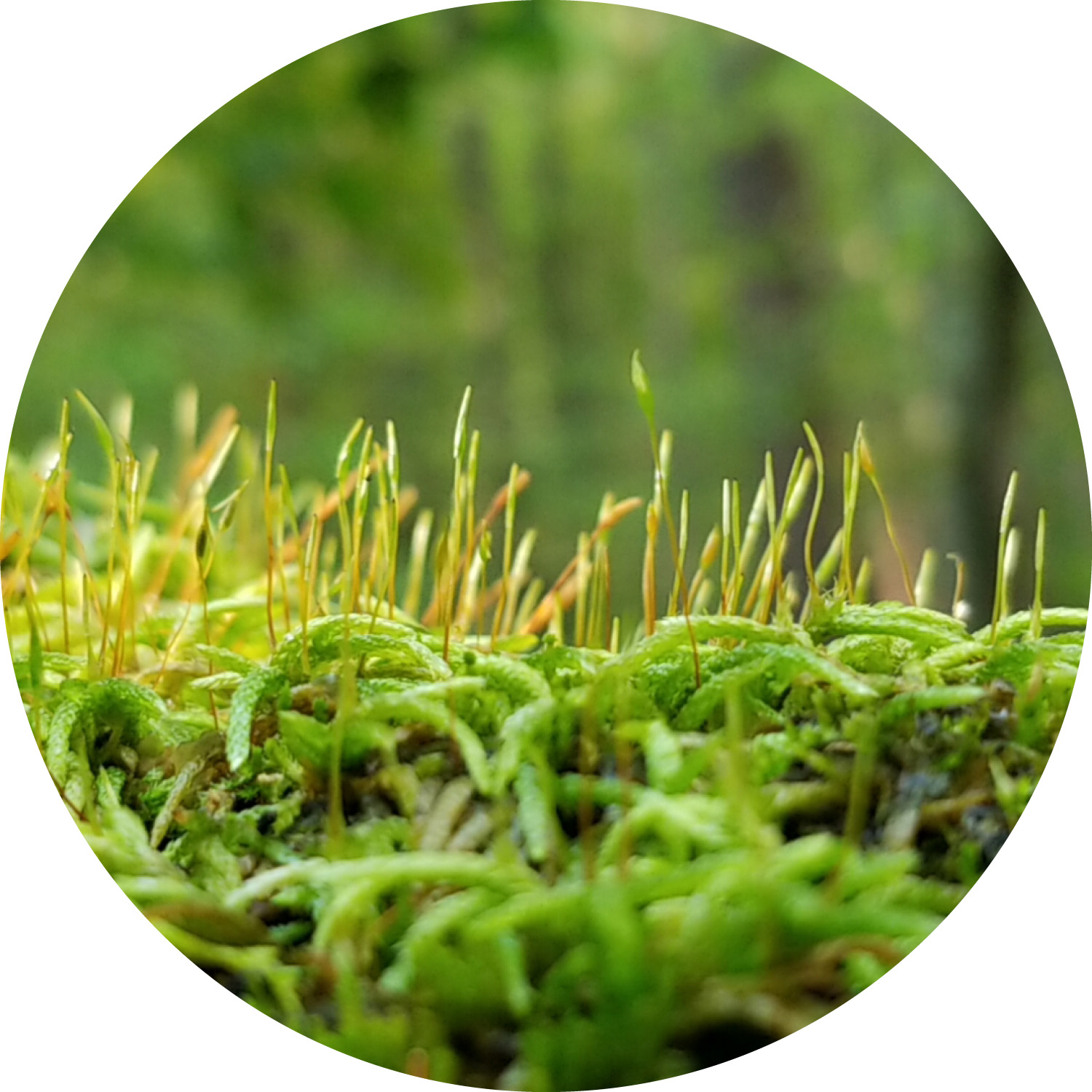Get your brackets ready. Moss madness because moss matters.

The Bracket

The Teams

NO PARASITE EPIPHYTE: Fan Moss
Think Cooper Flagg-level lockdown defense…Because nothing gets past this moss
Forsstroemia trichometria. Common North American moss species that is epiphytic, meaning that they grow on other plants (whether alive or dead) and get their moisture and nutrients from the air. Unlike parasites, which actively harm their hosts, epiphytes are just along for the ride, and don’t impact the health of their resident trees.

THE GIANT: Haircap Moss
Your 5-man center—the tallest player on the court, commanding the paint
Polytrichum commune. One of the tallest species of moss, usually topping out at 4.5 inches, although it’s capable of growing even higher under ideal conditions. Its leaves resemble miniature pine trees.

HIGH AND DRY: Pincushion Moss
A baseline alley-oop off an assist. What this moss can do is pretty amazing
Leucobryum albidum. Common species frequently found growing along the base of trees. Unlike other mosses, it can tolerate high and dry conditions, giving it an edge in upland locations. This moss is easy to pick out for its tendency to form green or gray pincushion-like spheres—each “cushion” is a miniature habitat for amphibians, insects and other small creatures.

DENSE AND INTENSE: Plait Moss
This moss can set a pretty mean screen
Calliergonella lindbergii. Moss notable for its glossy sheen, especially when viewed up close under magnification. It grows in thick horizontal mats, forming dense colonies that do particularly well on rocks and other stone surfaces.

THE ULTIMATE ADAPTOR: Sheet Moss
A super versatile player who can thrive in any position
Hypnum curvifolium. Prefers trees and rotting logs, though it’s adaptable and can thrive anywhere sufficiently moist and undisturbed. This species is also sometimes known as “feather moss” because of its fronds, but there are several species that also go by this common name, so we’ll stick with sheet moss.

THE SEDUCTRESS: Silk Moss
Just check the scientific name. The GOAT
Entodon seductrix. Lovely any time of year, but especially striking when it goes for the goal by sending up sporophytes, the elongated stalks that produce the spores that allow mosses to reproduce. Because they evolved millions of years before insects, most moss species are wind-pollinated, but scientists have recently discovered a few species that use tiny arthropods like mites and springtails to spread their spores.

TAKE A BITE OUT OF THIS: Toothed Moss
Think of this moss as a player who is always in the right place at the right time
Plagiomnium cuspidatum. Abundant in warm, humid regions of North America, with distinctive pointed tips on its tiny leaves that are visible with a hand lens. Songbirds and salamanders frequently use toothed moss to line their nests, and researchers are investigating potential antimicrobial and antifungal properties.

WHIP YOU INTO SHAPE: Whipfork Moss
This moss is another versatile player, but occasionally air balls—don’t we all?
Dicranum flagellare. Plays well with others. So well that it grows on other plants (whether alive or dead) and gets moisture and nutrients from the air.

No Parasite Epiphyte: Fan Moss
Think Cooper Flagg-level lockdown defense…Because nothing gets past this moss
Learn More
Forsstroemia trichometria. Common North American moss species that is epiphytic, meaning that they grow on other plants (whether alive or dead) and get their moisture and nutrients from the air. Unlike parasites, which actively harm their hosts, epiphytes are just along for the ride, and don’t impact the health of their resident trees.

The Giant: Haircap Moss
Your 5-man center—the tallest player on the court, commanding the paint
Learn More
Polytrichum commune. One of the tallest species of moss, usually topping out at 4.5 inches, although it’s capable of growing even higher under ideal conditions. Its leaves resemble miniature pine trees.

High & Dry: Pincushion Moss
A baseline alley-oop off an assist. What this moss can do is pretty amazing
Learn More
Leucobryum albidum. Common species frequently found growing along the base of trees. Unlike other mosses, it can tolerate high and dry conditions, giving it an edge in upland locations. This moss is easy to pick out for its tendency to form green or gray pincushion-like spheres—each “cushion” is a miniature habitat for amphibians, insects and other small creatures.

Dense & Intense: Plait Moss
This moss can set a pretty mean screen
Learn More
Calliergonella lindbergii. Moss notable for its glossy sheen, especially when viewed up close under magnification. It grows in thick horizontal mats, forming dense colonies that do particularly well on rocks and other stone surfaces.

The Ultimate Adaptor: Sheet Moss
A super versatile player who can thrive in any position
Learn More
Hypnum curvifolium. Prefers trees and rotting logs, though it’s adaptable and can thrive anywhere sufficiently moist and undisturbed. This species is also sometimes known as “feather moss” because of its fronds, but there are several species that also go by this common name, so we’ll stick with sheet moss.

The Seductress: Silk Moss
Think the GOAT of basketball. It’s in the Latin name
Learn More
Entodon seductrix. Lovely any time of year, but especially striking when it goes for the goal by sending up sporophytes, the elongated stalks that produce the spores that allow mosses to reproduce. Because they evolved millions of years before insects, most moss species are wind-pollinated, but scientists have recently discovered a few species that use tiny arthropods like mites and springtails to spread their spores.

Take a Bite Out of This: Toothed Moss
Think of this moss as a player who is always in the right place at the right time
Learn More
Plagiomnium cuspidatum. Abundant in warm, humid regions of North America, with distinctive pointed tips on its tiny leaves that are visible with a hand lens. Songbirds and salamanders frequently use toothed moss to line their nests, and researchers are investigating potential antimicrobial and antifungal properties.

Whip You Into Shape: Whipfork Moss
This moss is another versatile player, but occasionally air balls—don’t we all?
Learn More
Dicranum flagellare. Plays well with others. So well that it grows on other plants (whether alive or dead) and gets moisture and nutrients from the air.
Why Moss Matters

Moss matters for myriad reasons. It’s a component of almost every landscape globally and benefits natural ecosystems and climate in numerous ways. Learn why moss matters and how Duke Gardens is telling its story through a new interpretative moss garden.
Moss Map
Want to meet the teams? Visit moss locker rooms across the Culberson Asiatic Arboretum, including the Kathleen Smith Moss Garden, the Interpretative Moss Garden and the Ruth Mary Meyer Japanese Garden. Reminder that there are important changes for visitors this year due to construction of the Garden Gateway, including no visitor parking available Monday-Friday.

Did you know mosses are among the first plants to recolonize damaged habitats after events like forest fires, helping to slow erosion and, because of their capacity for water retention, aiding recovery and regrowth?
Did you know mosses have enhanced carbon storage and possess heightened levels of vital nutrients?
Did you know mosses are essential to many animals and insects for food, shelter and nesting materials? Robins and chickadees are just two familiar backyard birds that use moss to line their nests.
Questions about Moss Madness?
Please contact us at gardens@duke.edu.
